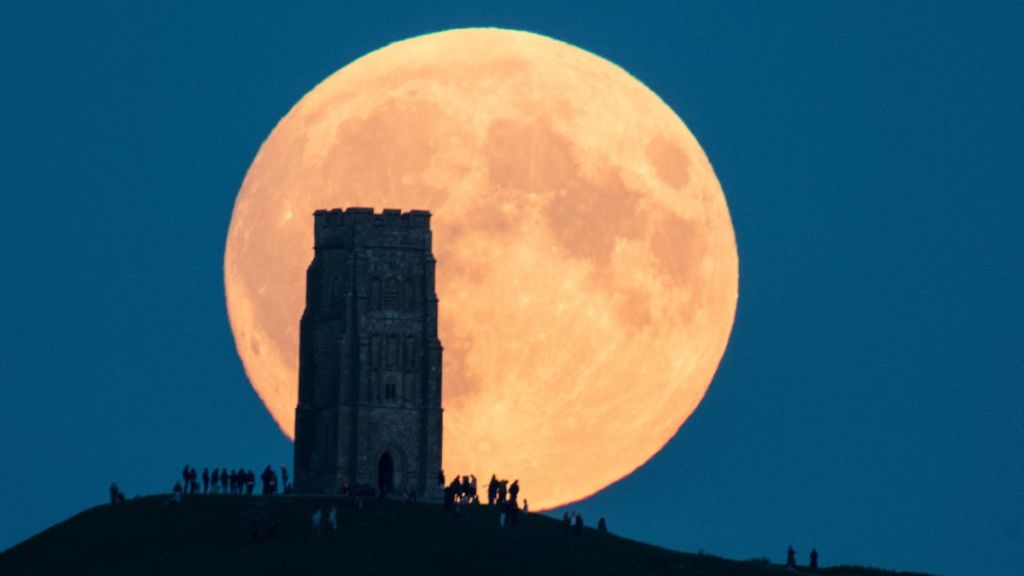Astronomy enthusiasts are in for another treat this year as a multifaceted celestial event will occur at the same time during tonight’s (September 17/18) full moon, which will be a supermoon. The rare phenomenon will be a partial lunar eclipse with the Super Harvest Moon. Skywatchers will be able to see the rare celestial occurrences in the Americas, Europe, and Africa.
This year’s September harvest moon coincides with a supermoon, a blood moon, and a partial lunar eclipse. Astrophysicist Teresa Monsue of NASA’s Goddard Space Flight Center told NPR that all three events occurring at the same time are “quite rare.” As expected, astronomy enthusiasts across several regions are gearing up for this month’s rare celestial event. Monsue also shared that it is safe for skywatchers to “look directly at the moon during a lunar eclipse.” This is because the reflected light is not brighter than moonlight.
Now let’s take a look at when the 2024 Super Harvest Moon Eclipse will take place.
When & how can you watch the rare lunar eclipse 2024?
According to NASA, the full moon will be on Tuesday, September 17, 2024, at 10:35 p.m. EDT. Meanwhile, the Moon will begin to enter Earth’s partial shadow at 8:41 p.m. EDT. The partial lunar eclipse, with only the top eight percent of the Moon in full shadow, will peak at 10:44 p.m. EDT. It will be visible from all of North and South America, but the visibility depends on the weather, according to NPR. The eclipse will come to an end when the Moon exits the partial shadow on Wednesday (September 18) at 12:47 a.m. EDT.
Meanings of Supermoon, Harvest Moon, and Blood Moon explored
The various nicknames for the Moon’s phases and occurrences throughout the year hold different meanings. NASA Space Place explains that a full moon occurs when a side of the Moon that faces the Earth is completely lit up by the Sun rays. Meanwhile, a supermoon appears when a full moon reaches its closest point in its orbit, called a perigee, around Earth. It looks larger than usual as it’s more closer to the planet. The Moon’s perigee is about 226,000 miles from Earth and reaches the point during every 27-day orbit around Earth. A supermoon is a nickname for otherwise what astronomers call a perigean full moon.
The harvest moon refers to a full moon that occurs closest to the start of autumn. NASA states this is the full moon closest to the autumnal equinox. The term harvest moon was coined during the time before electricity existed. This is when the farmers would depend on the Moon’s light to harvest their crops late into the night. The moonlight was especially important during autumn because the harvesting happens on a large scale ahead of the cold weather.
NASA Space Place states that a blood moon occurs during a total lunar eclipse. However, Monsue told NPR that this month’s super harvest moon with a partial lunar eclipse will also be a blood moon. The moon will have a reddish-brown appearance because “most of the visible lunar disk will be in Earth’s penumbra.” This is “the lighter portion of the planet’s shadow that does not entirely block the sun’s light.”
During an eclipse, the Earth is positioned between the Moon and the Sun, which hides the Moon from sunlight. NASA Space Place explains that when this happens, only the light from the edges of the Earth’s atmosphere reaches the Moon. Most of the blue light gets scattered because of the air molecules from Earth’s atmosphere. Meanwhile, a red glow is cast onto the surface of the Moon by the remaining light. This makes the Moon appear red in the night sky.









